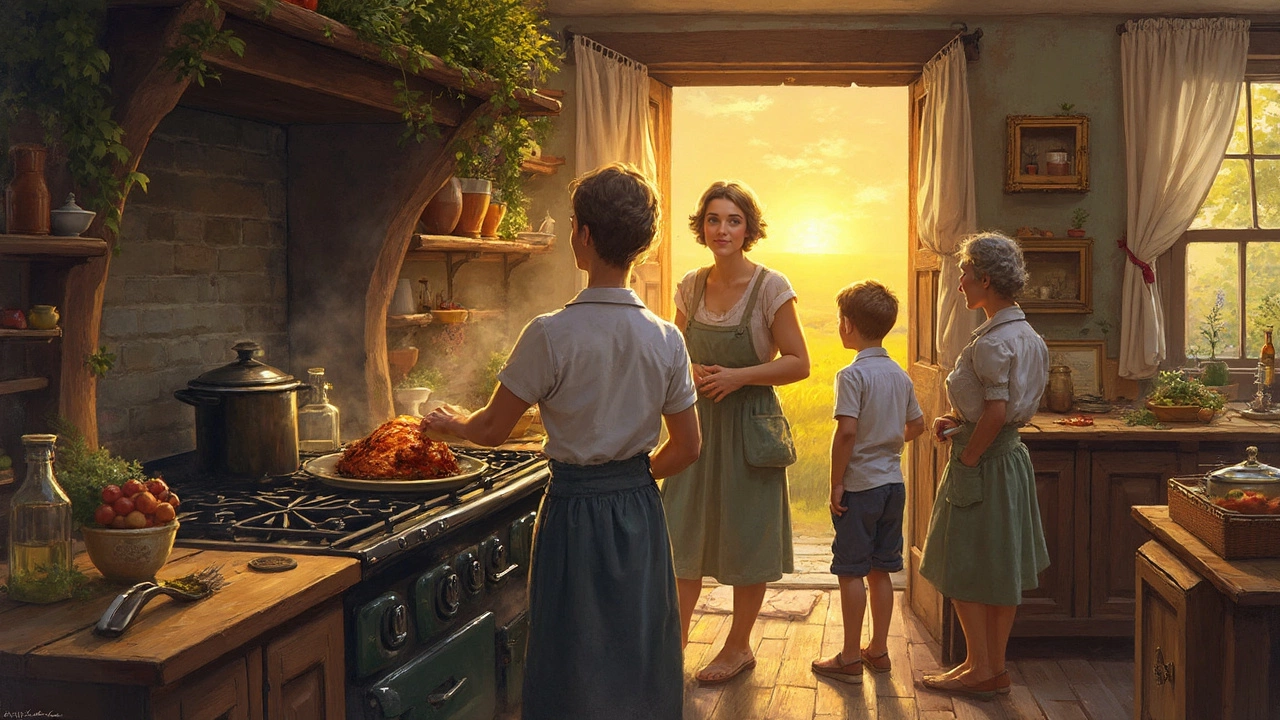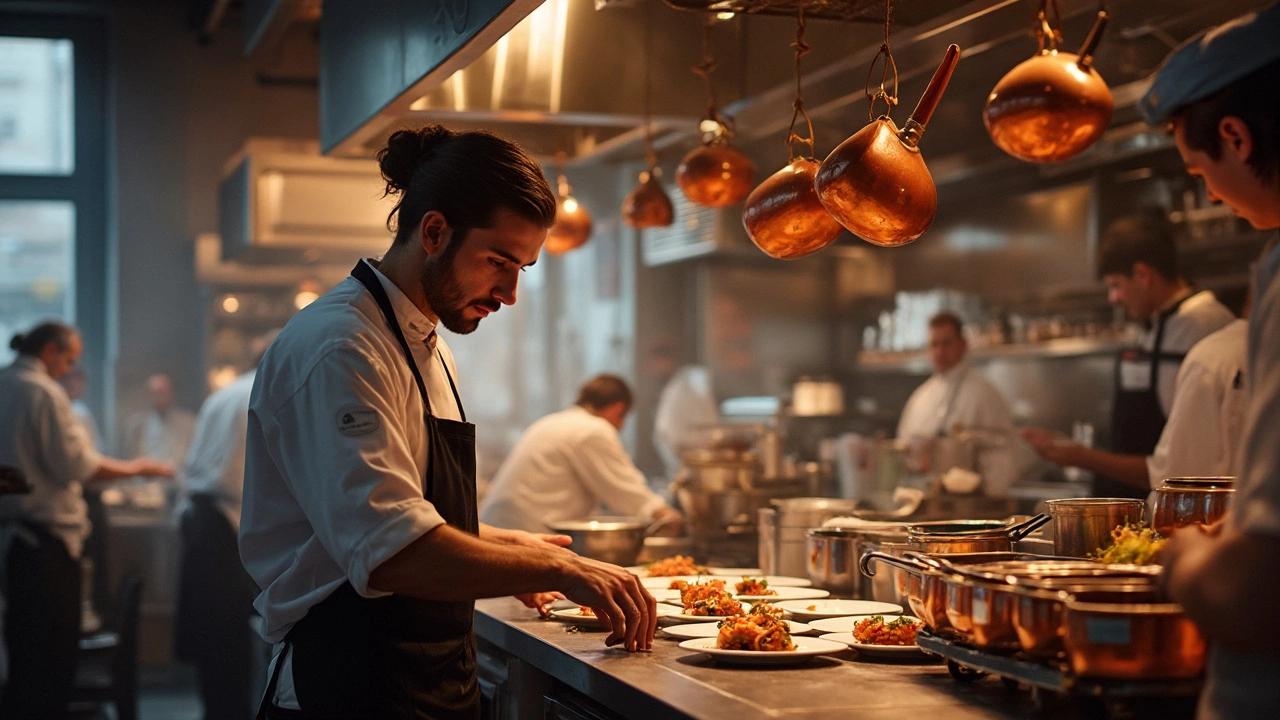Ever wondered why many chefs seem to steer clear of pressure cookers in professional kitchens? It's not just about keeping up with culinary trends or preferring the sound of a bubbling pot on the stove. There are some practical reasons behind this choice that might surprise you.
One big thing is control. Chefs love having full command over their cooking processes. When you're dealing with delicate sauces or precise textures, slapping a lid on and letting the steam go wild isn't always ideal. Cooking's all about timing and adjustments, and pressure cookers can take some of that fine-tuning out of the equation.
Next up is flavor. Believe it or not, some chefs think pressure cookers can mute flavors. The intense, rapid cooking might not allow flavors to develop as they would with a gentle simmer that slowly tempts out every nuance. Plus, there's the texture game. Achieving what's known in chef lingo as the 'perfect bite' often means longer cooking methods over the high-speed pressure cooker route.
- The Need for Cooking Control
- Flavor Differences and Texture
- Traditional Techniques vs. Modern Gear
- Pressure Cooker Benefits in Home Kitchens
- Tips for Using a Pressure Cooker
The Need for Cooking Control
Having control in the kitchen is as important to a chef as a spatula to a pancake. When it comes to cooking, they want to adjust and adapt at every step. It's not just about having power over heat; it’s about finesse—those little tweaks that make all the difference.
With a pressure cooker, the whole process can feel like a set-it-and-forget-it deal. While this is super convenient for home cooks, in professional kitchens, chefs need to be more hands-on. For instance, with a pressure cooker, once you seal the lid, it's hard to check in on your dish without releasing pressure, which interrupts the cooking process.
Balancing Act: Time and Temperature
Cooking is as much about timing as it is about the recipe. Chefs want the flexibility to lower the heat to let flavors deepen or turn it up to get a crispy sear. With a pressure cooker, the options are limited once you set it up.
- How do you add spices gradually or taste for seasonings?
- What if the texture isn't quite right, and you only realize it midway?
These are challenges chefs may face with this device.
Complex Dishes, Simple Solutions
Pressure cookers excel at cooking quickly, but some dishes simply need more time to let all the ingredients make friends. Think of a classic beef stew. Slowly simmering allows the meat to soak up all the flavors while breaking down just right. The same results can be tough to achieve with a pressure cooker's tight deadline.
Professional Insights in Numbers
To give you an idea, here's a simple comparison of cooking times and control situations in pressure cooking vs. conventional methods:
| Method | Cooking Time | Level of Control |
|---|---|---|
| Pressure Cooker | 60 minutes | Limited |
| Traditional Stovetop | 120 minutes | High |
So, while a pressure cooker might be perfect for whipping up a quick meal at home, in a professional setting, chefs often choose a method that allows them to keep their hands—and taste buds—fully in charge.
Flavor Differences and Texture
What makes a dish truly memorable? Many would argue it's all about flavor and texture. When it comes to professional cooking, these elements are absolutely crucial, and this is precisely where the traditional methods often win over the pressure cooker.
Pressure cooking is known for its speed. It’s like a culinary fast track, getting food cooked at a fraction of the time. But here’s the catch: speeding through the cooking process can sometimes result in muted flavors. Imagine slowly simmering a stew on the stove. Over time, its ingredients combine and flavors deepen, giving you a complex richness that’s hard to beat.
In contrast, pressure cookers don’t provide the same gradual melding of flavors. Sure, you might end up with a tender piece of meat or a quick-cooked soup, but the subtle layers of taste might not shine through as they would with slower cooking.
Texture Matters Too
Texture’s another reason chefs might shy away from pressure cookers. When you’re in a professional kitchen, achieving the perfect texture is like hitting a home run. Pressure cooking can, admittedly, make meats nice and tender. But, it can also turn vegetables to mush pretty quickly or overcook pasta to a gummy mess if you’re not careful.
In high-end cooking, texture is all about balance. The snap of a perfectly cooked vegetable, the bite of al dente pasta, or the crusty edge of a well-seared piece of meat – these are achieved through careful attention and time, not through high-pressure speeds.
It’s not that pressure cookers are bad. Far from it. They’re fantastic for home cooks who want to prepare a hearty meal without spending hours in the kitchen. But for those in the culinary trenches, chasing those delicate flavors and textures, traditional methods often reign supreme.

Traditional Techniques vs. Modern Gear
In professional kitchens, the time-honored methods often win over modern technology, and that's where the pressure cooker finds itself on the losing side. Ask any seasoned chef about these kitchen battles, and they might tell you that traditional techniques offer a certain artistry and control that gadgets can't match.
Traditional cooking methods, like braising or slow roasting, allow flavors to mingle and develop over time. It's about patience and letting ingredients speak for themselves. According to Chef Thomas Keller, "The success of a dish depends just as much on how it was cooked as what goes into it."
"The longer cooking times involved in traditional techniques can result in unparalleled depth of flavor and complex textures. These are things pressure cookers, with their rapid cooking times, simply can't replicate." - Chef Jamie Oliver
Chefs often say that traditional methods give them the chance to build layers of flavor. With techniques like searing or deglazing, it's not just cooking - it's crafting a story on a plate. And when you're trying to create a memorable dining experience, those details matter.
Modern Gear Perks
Now, this isn't to say that modern gear like the pressure cooker doesn't have a place in today's culinary world. They're efficient, which makes them champions of time-saving in busy home kitchens. For instance, a beef stew that might take a couple of hours on the stove can be done in about 30 minutes under high pressure, saving time on weeknights.
One quick fact to clear up is that modern pressure cookers aren't as daunting as old models with their valve-hissing and steam-billowing antics. Today's versions come with safety features and programmable settings that'll put any nervous cook's mind at ease.
- They cook faster – A blessing when you're pressed for time.
- They retain nutrients – The shorter cooking time means less nutrient loss.
- They're energy-efficient – Using pressure cuts down on cooking energy.
So, while chefs might prefer traditional methods for their control and impact on flavor, modern gear certainly holds its ground for convenience and speed, especially at home.
Pressure Cooker Benefits in Home Kitchens
While pressure cookers might not be the top pick in professional kitchens, they sure have a sweet spot in many home kitchens. Why's that? Because they save time like nobody's business. If you're busy juggling work, kids, and trying to cook up a storm at home, this gadget wants to be your new best friend.
So, what makes a pressure cooker so appealing to home cooks?
Speedy Cooking
Let's talk speed. Compared to traditional cooking methods, a pressure cooker can shave time off your meal prep like you wouldn't believe. Cooking stew or certain grains like brown rice can take a fraction of the usual time. Perfect for getting dinner on the table fast!
Energy Efficiency
With energy prices climbing, saving a bit of energy is always a win. A pressure cooker cooks your food faster and uses less energy thanks to its efficient heat retention. Who would've thought saving time and being earth-friendly could go hand in hand?
Preserving Nutrients
Here's a real kicker for the health-conscious: pressure cooking can actually preserve more nutrients in your food than some other methods. Because of the short cooking time and tight seal, fewer vitamins escape your dish, which means better nutrition in every bite.
Convenient One-Pot Cooking
Cleaning multiple pots and pans is a drag. Pressure cookers simplify things with one-pot cooking. You can sauté, brown, and then close the lid for pressure cooking all in the same pot. Less to wash? Yes, please.
No-Sweat Cooking for Tough Cuts
Got some tough meat cuts but craving something tender? This is where the magic happens. Even the most stubborn cuts turn fork-tender without hours of babysitting the stove. Just what you need for those comforting home-cooked meals.
While chefs may pass on pressure cookers in their bustling, control-driven environments, in the average home kitchen, they remain an incredibly efficient and convenient tool. Just remember, these devices are all about what works best for you.

Tips for Using a Pressure Cooker
Ready to get the most out of your pressure cooker? Whether you're a newbie or looking to refine your techniques, these tips will help you master the art of pressurized cooking.
Know Your Pressure Levels
Most pressure cookers offer at least two settings: high and low pressure. High pressure is great for cooking beans, grains, and meats that need more intensity. Low pressure? Perfect for delicate foods like fishes and vegetables that you don't want to turn to mush.
Liquid is Key
Pressure cookers need liquid to create steam pressure, but too much can dilute flavors. A general rule of thumb is to use at least one cup of liquid. Keep it to a minimum and use broths or stocks for more flavor.
Watch the Fill Line
Overfilling your pressure cooker isn't just messy; it can be dangerous. For best results, fill no more than two-thirds. For things that expand, like beans or rice, stick to half.
Release the Pressure Safely
There are two main ways to release pressure: the natural release and the quick release method. Natural release lets it come down on its own, which is great for broths or grains that need a bit more time. Quick release gets the job done faster if you're in a hurry, but watch out for that steam!
Layer, Don't Stir
If you're cooking a mix of different foods, like a stew, layer the heavier, longer-cooking items like meat at the bottom with quicker-cooking foods on top. Stirring before pressurizing can lead to uneven cooking.
- Use high-sodium broths for richer flavor.
- Consider adding spices after cooking to retain their punch.
- Practice safety when opening the lid.
Embrace these tips and you'll find yourself loving that pressure cooker in no time, cooking meals that are faster, and maybe even tastier than ever before!

I am an expert in the services industry with a focus on appliance repair. My passion lies in understanding how things work and educating others in simple, engaging ways. This enthusiasm fuels my writing, where I delve into topics around appliance maintenance and troubleshooting. I aim to make these subjects clear and accessible to all readers.